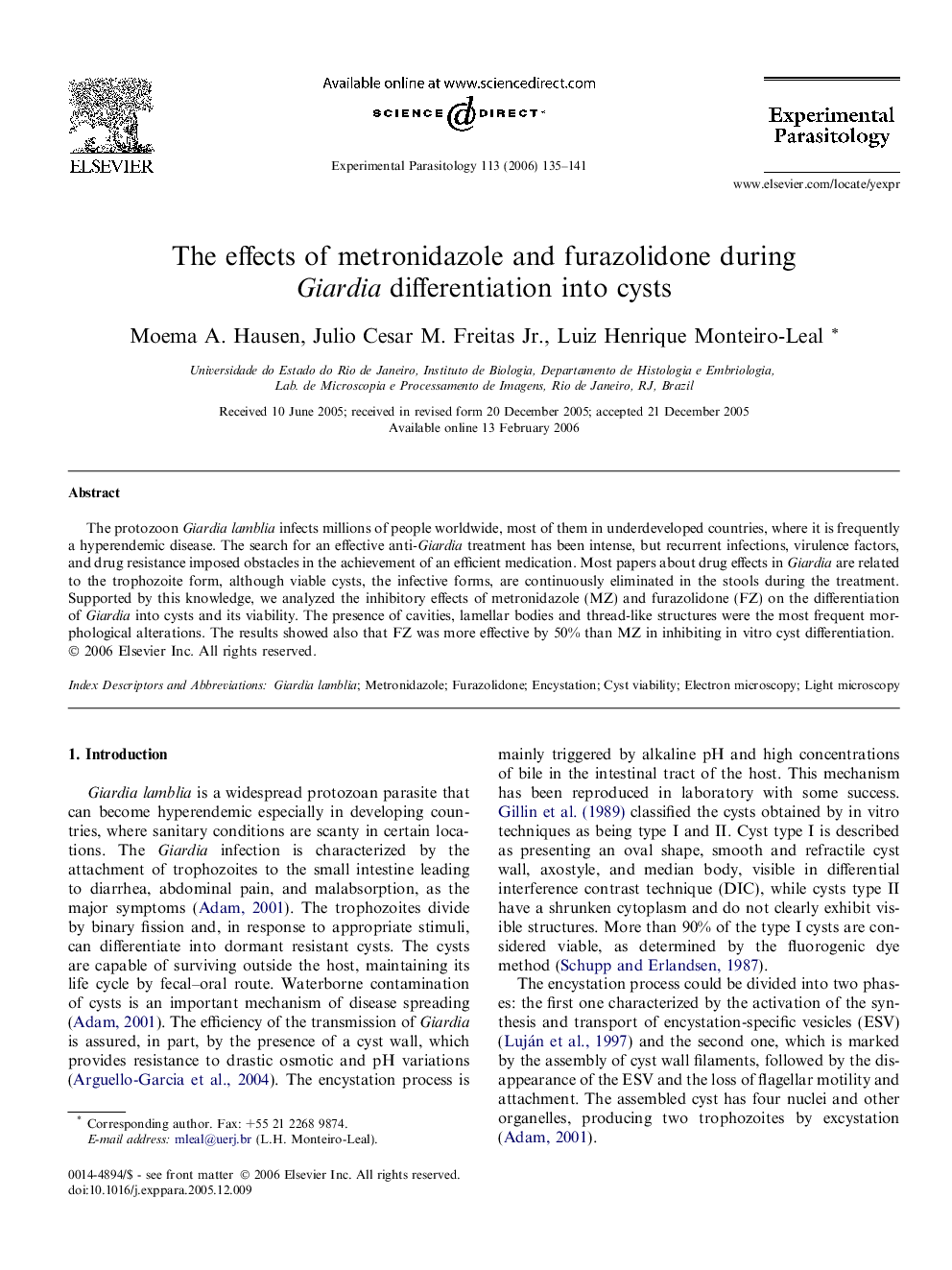| Article ID | Journal | Published Year | Pages | File Type |
|---|---|---|---|---|
| 4372192 | Experimental Parasitology | 2006 | 7 Pages |
The protozoon Giardia lamblia infects millions of people worldwide, most of them in underdeveloped countries, where it is frequently a hyperendemic disease. The search for an effective anti-Giardia treatment has been intense, but recurrent infections, virulence factors, and drug resistance imposed obstacles in the achievement of an efficient medication. Most papers about drug effects in Giardia are related to the trophozoite form, although viable cysts, the infective forms, are continuously eliminated in the stools during the treatment. Supported by this knowledge, we analyzed the inhibitory effects of metronidazole (MZ) and furazolidone (FZ) on the differentiation of Giardia into cysts and its viability. The presence of cavities, lamellar bodies and thread-like structures were the most frequent morphological alterations. The results showed also that FZ was more effective by 50% than MZ in inhibiting in vitro cyst differentiation.
